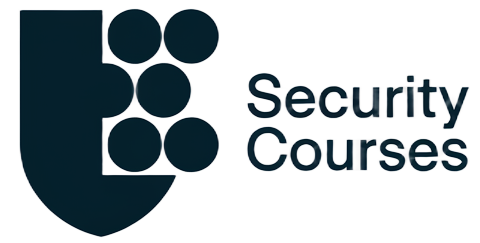Access management refers to the process of controlling who can access what resources within an organization’s network. It is a crucial aspect of cybersecurity, and it helps in ensuring that data is protected from unauthorized access, misuse, and loss. The concept of role-based control is fundamental to access management, as it enables organizations to grant access to users based on their roles and responsibilities within the organization.
Understanding the basics of access management
Access management involves the use of various techniques and tools to control access to digital resources. These tools can include firewalls, access control lists, authentication mechanisms, and encryption. The main objective of access management is to ensure that only authorized users can access digital resources, and that they can do so in a secure and controlled manner.
One of the key challenges in access management is balancing security with usability. While it is important to have strong security measures in place, overly restrictive access controls can hinder productivity and frustrate users. Access management policies should be designed to strike a balance between security and usability, taking into account the specific needs of the organization and its users.
Another important aspect of access management is monitoring and auditing. Access logs and other monitoring tools can help identify potential security breaches and track user activity. Regular audits of access management policies and procedures can also help ensure that they remain effective and up-to-date in the face of evolving security threats.
Importance of role-based control in access management
Role-based control is a crucial component of access management. It enables organizations to grant access to digital resources based on the role and responsibility of a user within the organization. For instance, a user may be granted access only to specific parts of the network or data based on their job function. This ensures that users only have access to the resources that are essential for their job function, thereby reducing the likelihood of accidental or intentional misuse of data.
Another benefit of role-based control is that it simplifies the process of granting and revoking access. Instead of managing access on a user-by-user basis, access can be granted or revoked based on the role of the user. This saves time and reduces the risk of errors that can occur when managing access for a large number of users.
Role-based control also helps organizations comply with regulatory requirements. Many regulations require organizations to limit access to sensitive data to only those individuals who need it to perform their job functions. Role-based control enables organizations to easily demonstrate compliance with these regulations by providing a clear audit trail of who has access to what data.
How access management helps in ensuring data security
Access management plays a vital role in ensuring data security within an organization. It enables organizations to control access to their digital resources, thereby reducing the likelihood of unauthorized access or data breaches. Access management also enables organizations to monitor user activity within their network, ensuring that any suspicious activity is detected and dealt with promptly.
In addition, access management allows organizations to implement different levels of access for different users, based on their roles and responsibilities. This ensures that sensitive data is only accessible to those who need it, and reduces the risk of accidental or intentional data leaks. Access management also helps organizations to comply with regulatory requirements, such as GDPR and HIPAA, by ensuring that data is only accessed by authorized personnel.
The connection between access management and compliance
Compliance is an important aspect of access management. Many organizations are required to comply with various regulations and standards, such as HIPAA, PCI-DSS, and GDPR. Compliance requirements often mandate that organizations implement access management controls to protect sensitive data. Access management solutions can help organizations achieve compliance by providing granular control over user access to data and supporting audit trails that demonstrate compliance.
Furthermore, access management can also help organizations maintain compliance by regularly reviewing and updating access policies and permissions. This ensures that only authorized users have access to sensitive data and that any changes to access are properly documented. Access management solutions can also provide automated alerts and notifications to administrators when unauthorized access attempts are made, allowing for quick response and remediation.
Best practices for implementing role-based access control (RBAC)
Implementing role-based access control (RBAC) requires careful planning and execution. The following best practices can help ensure a successful RBAC implementation:
- Define roles and responsibilities: Clearly define the roles and responsibilities of users within the organization.
- Limit permissions: Limit permissions to only those resources required for a user’s job function.
- Regularly review access: Regularly review user access to digital resources to ensure that it is appropriate.
- Monitor user activity: Monitor user activity within the network to detect and respond to suspicious activity.
Another important best practice for implementing RBAC is to establish a process for granting and revoking access. This process should be clearly defined and documented, and should include steps for requesting access, approving access, and removing access when it is no longer needed.
It is also important to ensure that RBAC is integrated with other security measures, such as authentication and encryption. RBAC should be part of a comprehensive security strategy that includes multiple layers of protection to safeguard digital assets.
Critical components of an effective access management strategy
An effective access management strategy must include the following critical components:
- User authentication: Authenticate users to ensure that they are who they claim to be.
- Authorization mechanisms: Authorize users based on their roles and responsibilities within the organization.
- Access control: Control access to digital resources to prevent unauthorized access.
- Monitoring and reporting: Monitor user activity and generate reports to detect and respond to suspicious activity.
Another critical component of an effective access management strategy is regular review and updates. Access control policies and procedures should be reviewed and updated regularly to ensure that they remain effective and relevant. This includes reviewing user access rights and permissions, as well as identifying and addressing any potential vulnerabilities in the system.
Additionally, employee training and awareness is essential to the success of an access management strategy. Employees should be trained on the importance of access control and the potential risks associated with unauthorized access. They should also be educated on how to properly use and protect their login credentials, and how to report any suspicious activity they may observe.
Benefits of using access management solutions for businesses
Using access management solutions can provide several benefits to businesses, including:
- Enhanced security: Access management solutions help in securing data and reducing the likelihood of data breaches.
- Improved compliance: Access management solutions can help businesses achieve compliance with various regulations and standards.
- Increased productivity: Access management can help in reducing the time and resources required to manage user access to digital resources.
Another benefit of using access management solutions is that it can help businesses save money. By automating the process of managing user access, businesses can reduce the need for manual labor and save on costs associated with managing user access manually.
Access management solutions can also help businesses improve their customer experience. By providing secure and easy access to digital resources, businesses can enhance their customers’ experience and build trust with them.
The impact of access management on user experience and productivity
Effective access management can have a significant impact on user experience and productivity. With role-based access control, users only have access to resources they need, improving their productivity and reducing the likelihood of errors. Access management solutions can also improve the user experience by providing single sign-on functionality and reducing the need for users to remember multiple usernames and passwords.
In addition, access management can also enhance security by preventing unauthorized access to sensitive information. By implementing access controls, organizations can ensure that only authorized personnel have access to confidential data, reducing the risk of data breaches and cyber attacks. This not only protects the organization’s reputation but also helps to comply with regulatory requirements.
Key considerations when choosing an access management solution
When choosing an access management solution, organizations should consider the following factors:
- Scalability: The solution should be scalable to support the growing needs of the organization.
- Integration: The solution should integrate with other systems and tools already in use within the organization.
- Usability: The solution should be user-friendly and easy to manage.
- Security: The solution should be secure and offer robust security features to protect data.
Another important factor to consider when choosing an access management solution is the level of customization it offers. Organizations have unique needs and requirements, and a one-size-fits-all solution may not be sufficient. A customizable solution allows organizations to tailor the access management system to their specific needs, ensuring that it aligns with their business processes and workflows. This can lead to increased efficiency and productivity, as well as improved security.
Real-world examples of successful role-based control implementations
There are several real-world examples of successful role-based control implementations. For instance, a large healthcare provider implemented RBAC to control user access to sensitive patient data. By implementing RBAC, the provider was able to reduce the likelihood of data breaches and ensure compliance with HIPAA regulations. Another example is a financial institution that implemented RBAC to control user access to financial data, reducing the risk of data breaches and improving compliance with regulations such as PCI-DSS.
Another example of successful RBAC implementation is in the aviation industry. Airlines use RBAC to control access to critical systems such as flight control and navigation. By implementing RBAC, airlines can ensure that only authorized personnel have access to these systems, reducing the risk of cyber attacks and ensuring the safety of passengers.
RBAC is also widely used in the technology industry. Companies such as Google and Microsoft use RBAC to control access to their internal systems and data. By implementing RBAC, these companies can ensure that only authorized employees have access to sensitive information, reducing the risk of data breaches and intellectual property theft.
Future trends in the field of access management and RBAC
The field of access management is rapidly changing, with several emerging trends. Some of the future trends in access management and RBAC include:
- Identity and access governance (IAG): IAG solutions provide a comprehensive approach to access management, integrating identity management, access control, and governance functionalities.
- Machine learning: Machine learning algorithms can analyze user behavior to detect suspicious activity and prevent data breaches.
- Cloud-based access management: The adoption of cloud-based solutions with access management functionality is likely to increase, offering enhanced flexibility and scalability.
In conclusion, access management is a crucial component of cybersecurity and helps organizations control access to their digital resources. Role-based control is fundamental to access management and enables organizations to grant access to users based on their roles and responsibilities. By implementing access management solutions, organizations can enhance security, achieve compliance with regulations, and improve user productivity and experience.
Another emerging trend in access management is the use of biometric authentication. Biometric authentication uses unique physical characteristics, such as fingerprints or facial recognition, to verify a user’s identity. This method of authentication is becoming increasingly popular due to its convenience and security. Additionally, the use of blockchain technology in access management is also gaining traction. Blockchain can provide a decentralized and secure way to manage access control, reducing the risk of data breaches and unauthorized access.







